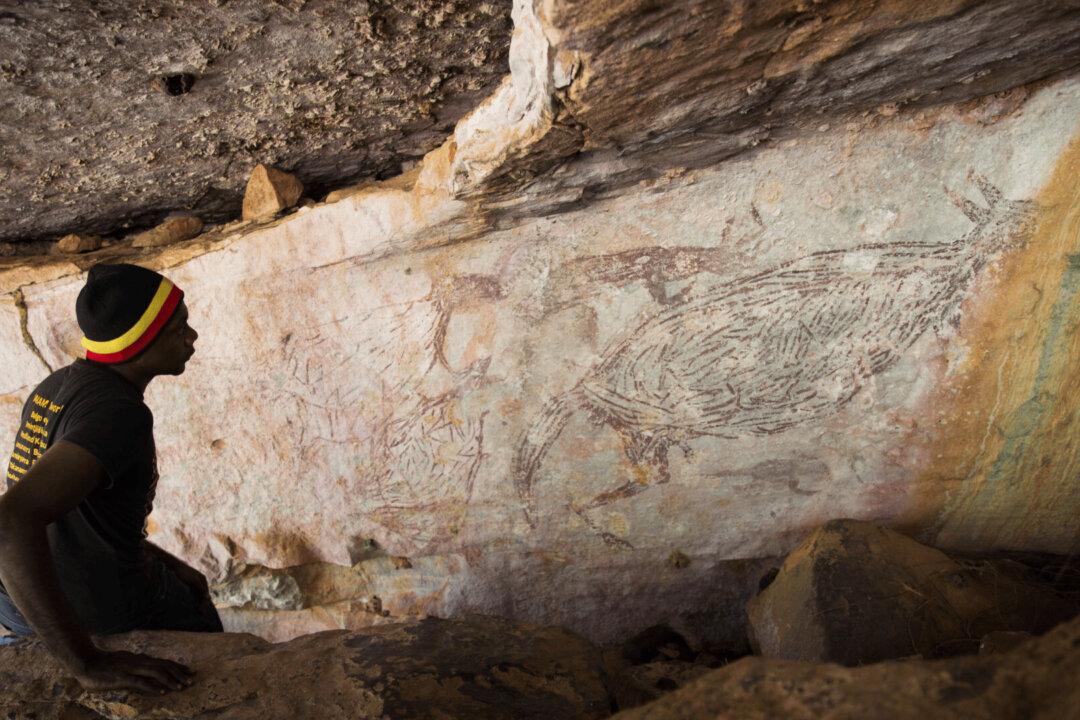An Australian rock painting has been dated at approximately 17,300 years old—the oldest known artwork still on the wall of a rock shelter in the country—in a finding that unlocks a greater understanding of humanity’s ancient past.
Researchers from the University of Melbourne (UM) and the University of Western Australia (UWA) found the kangaroo painted by ancestors of the Balanggarra people from the northeast Kimberley region of Western Australia.





